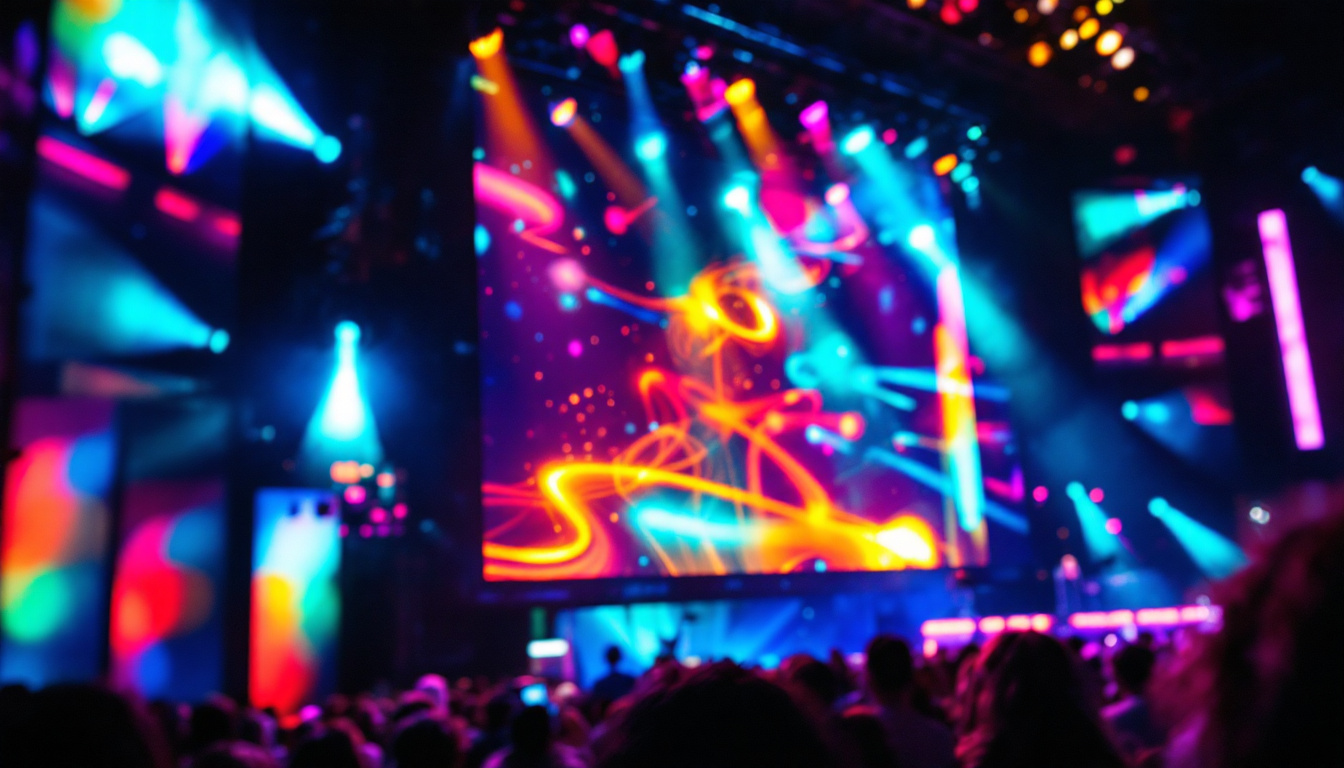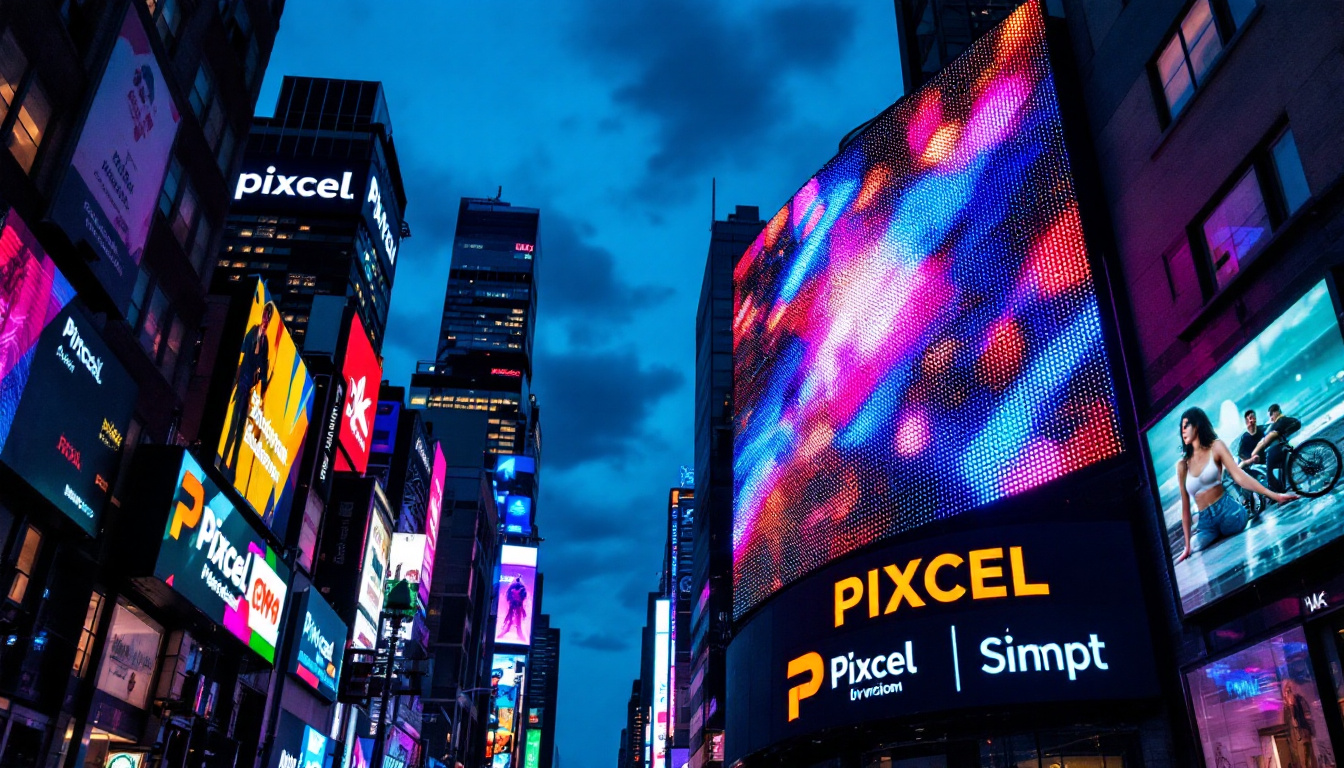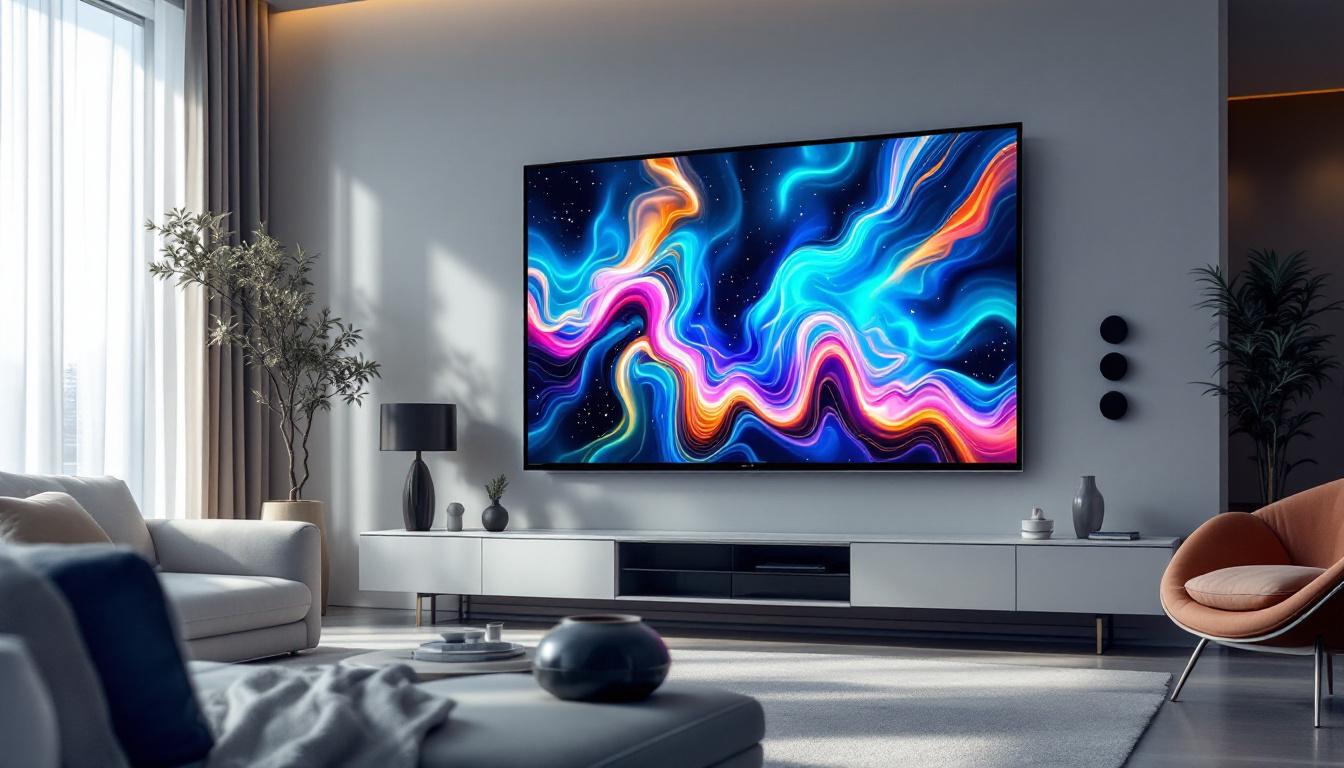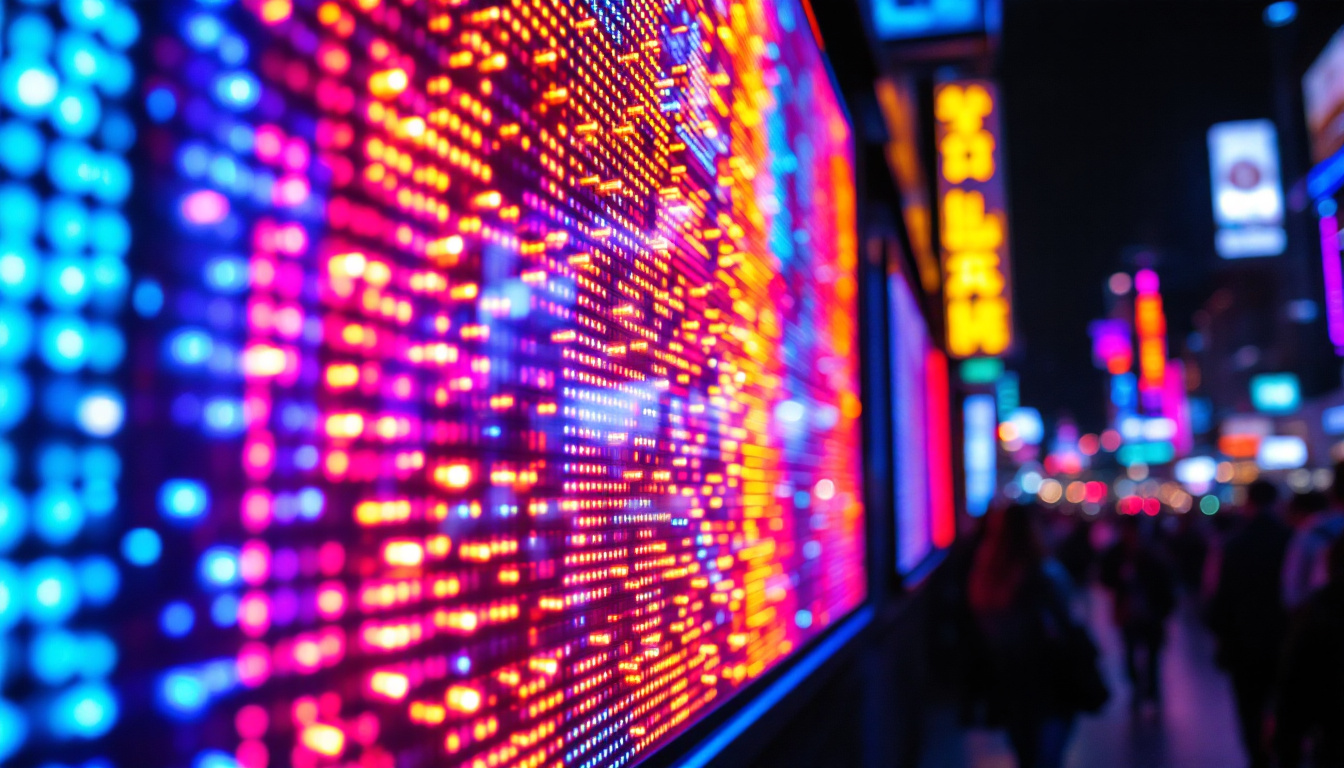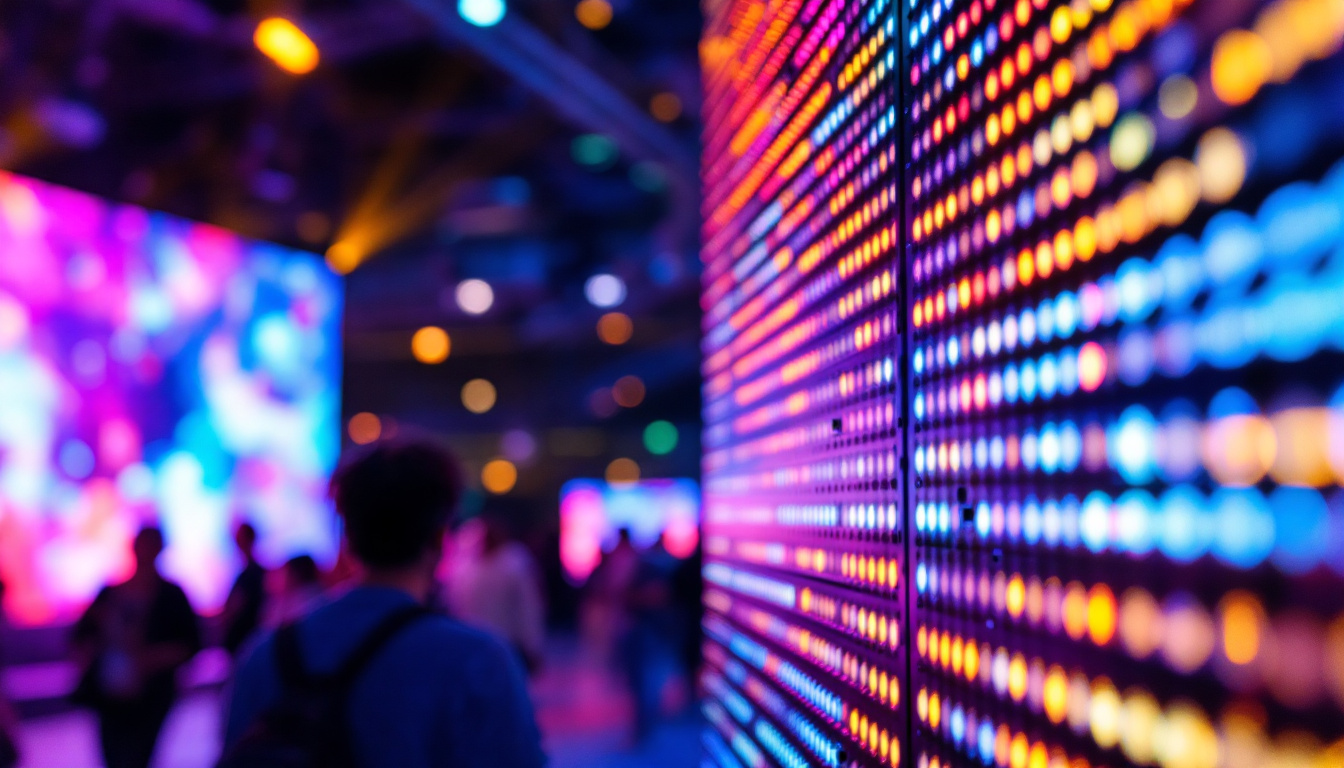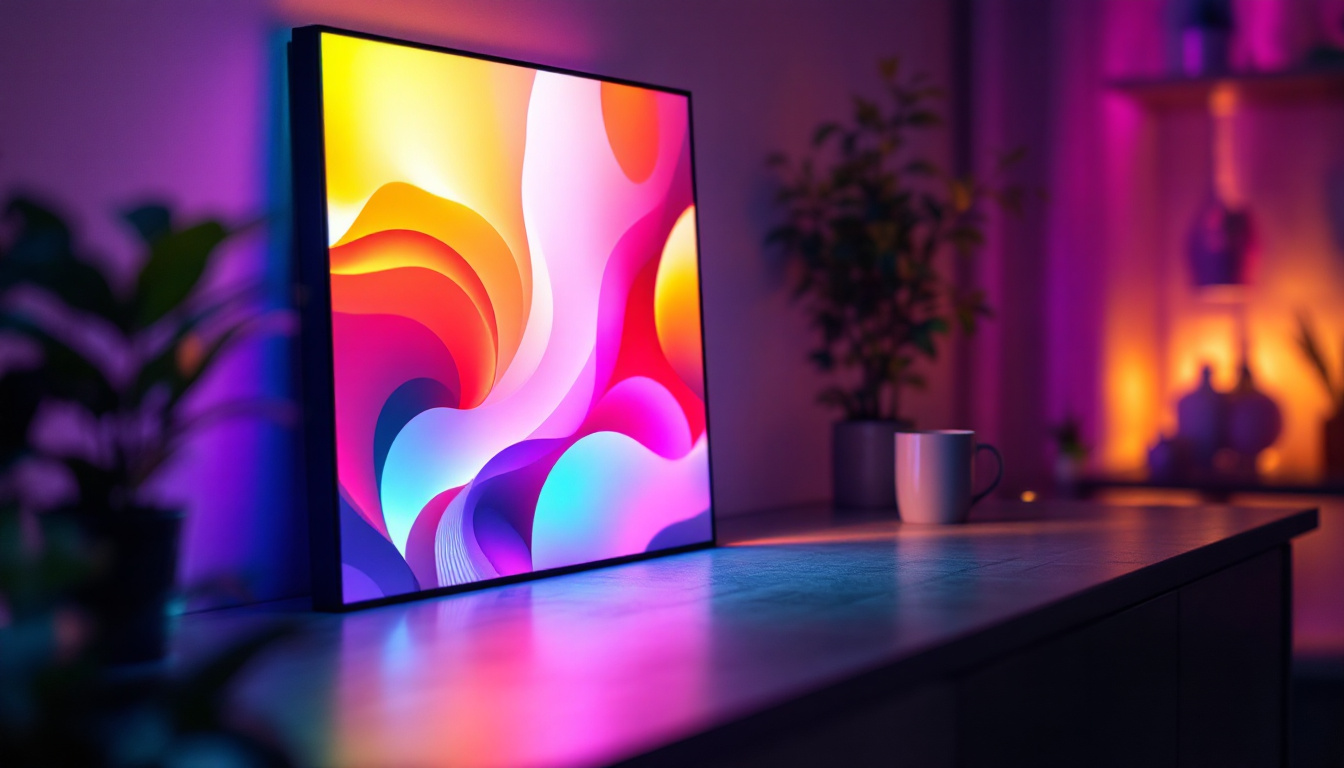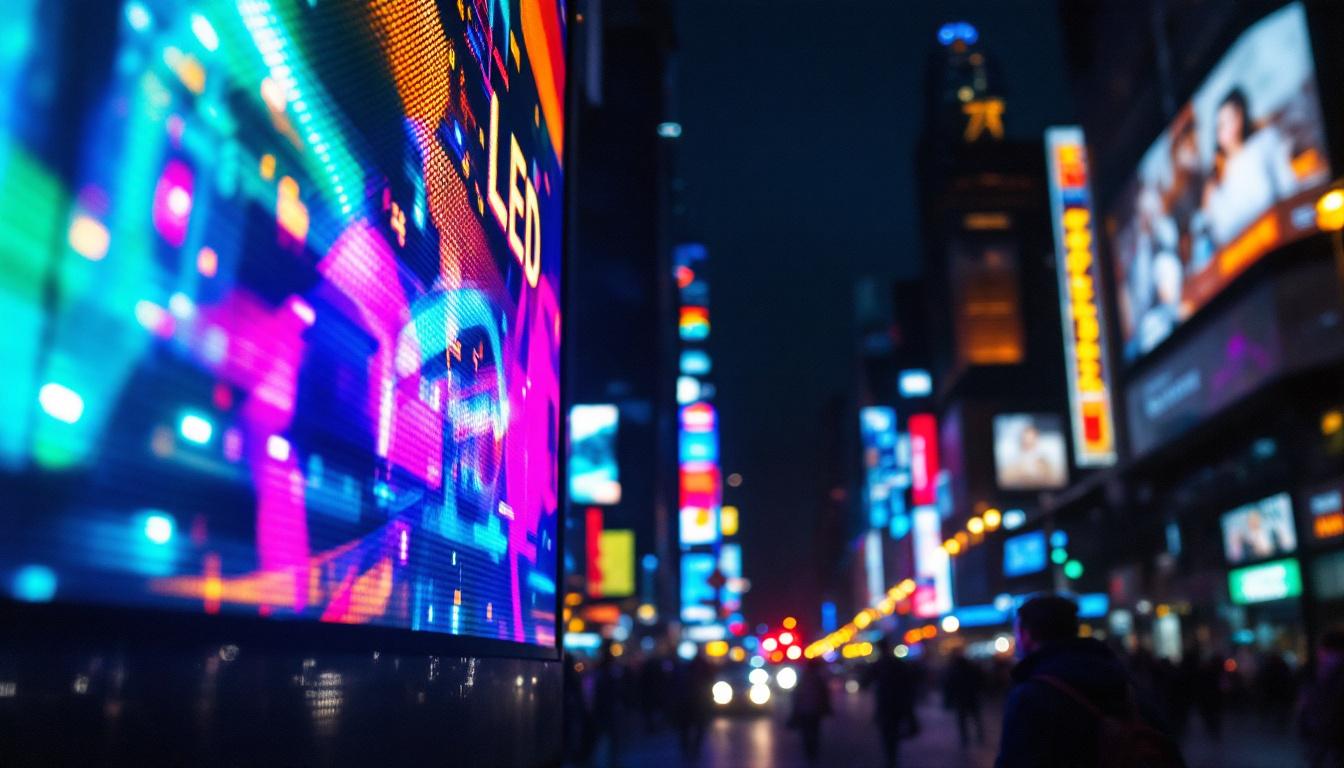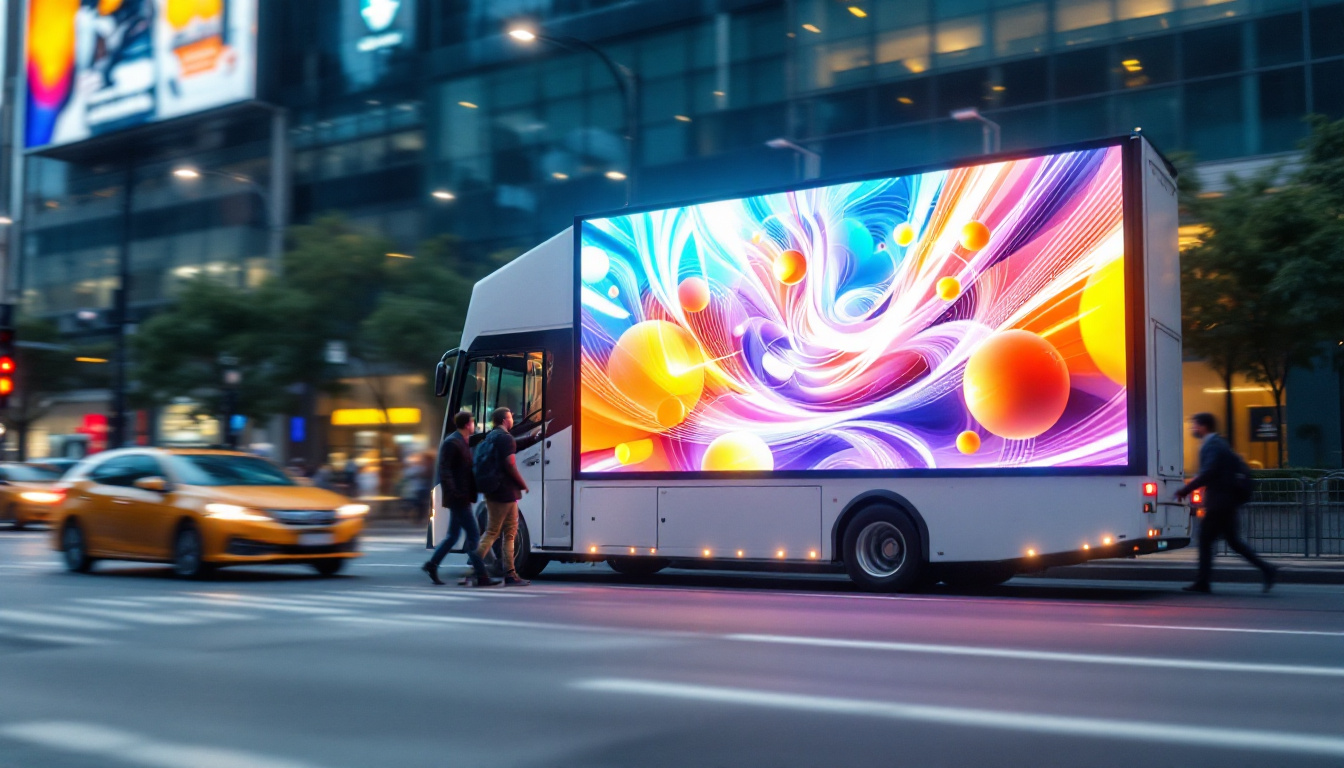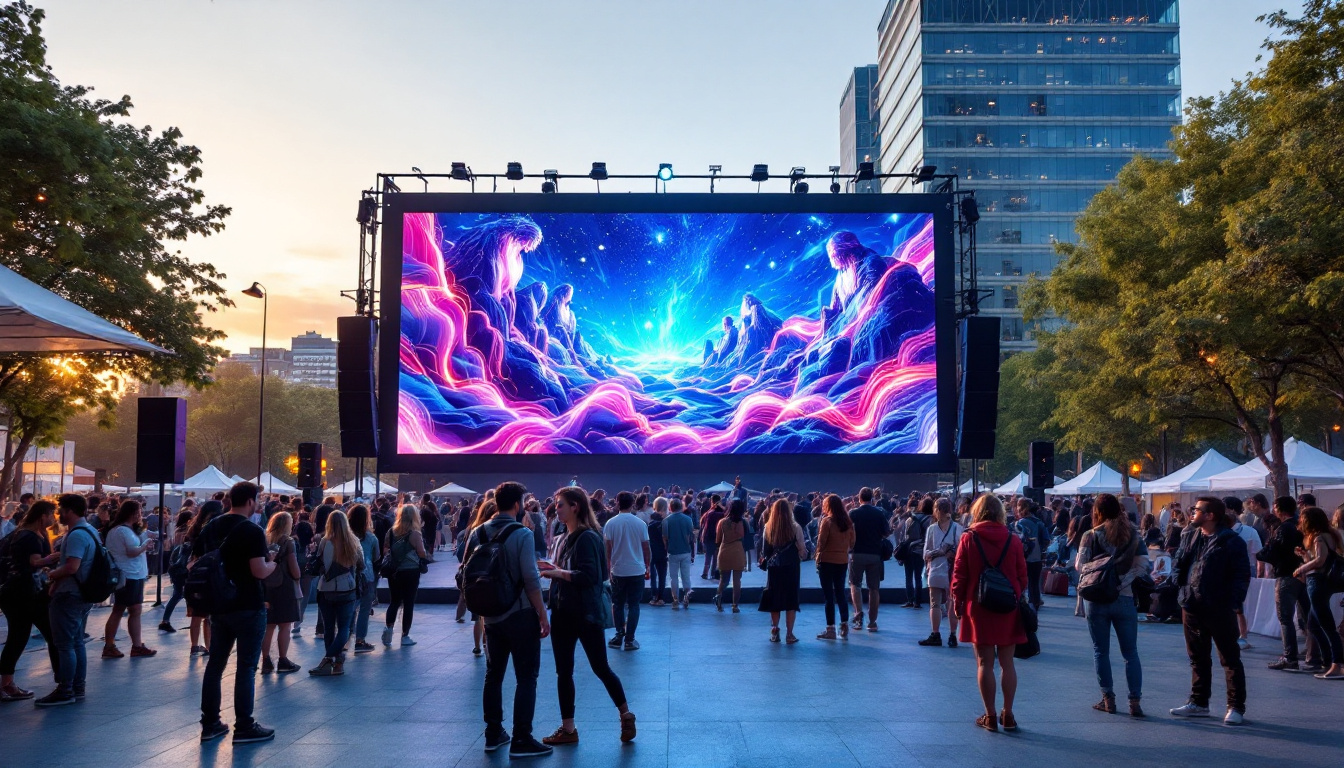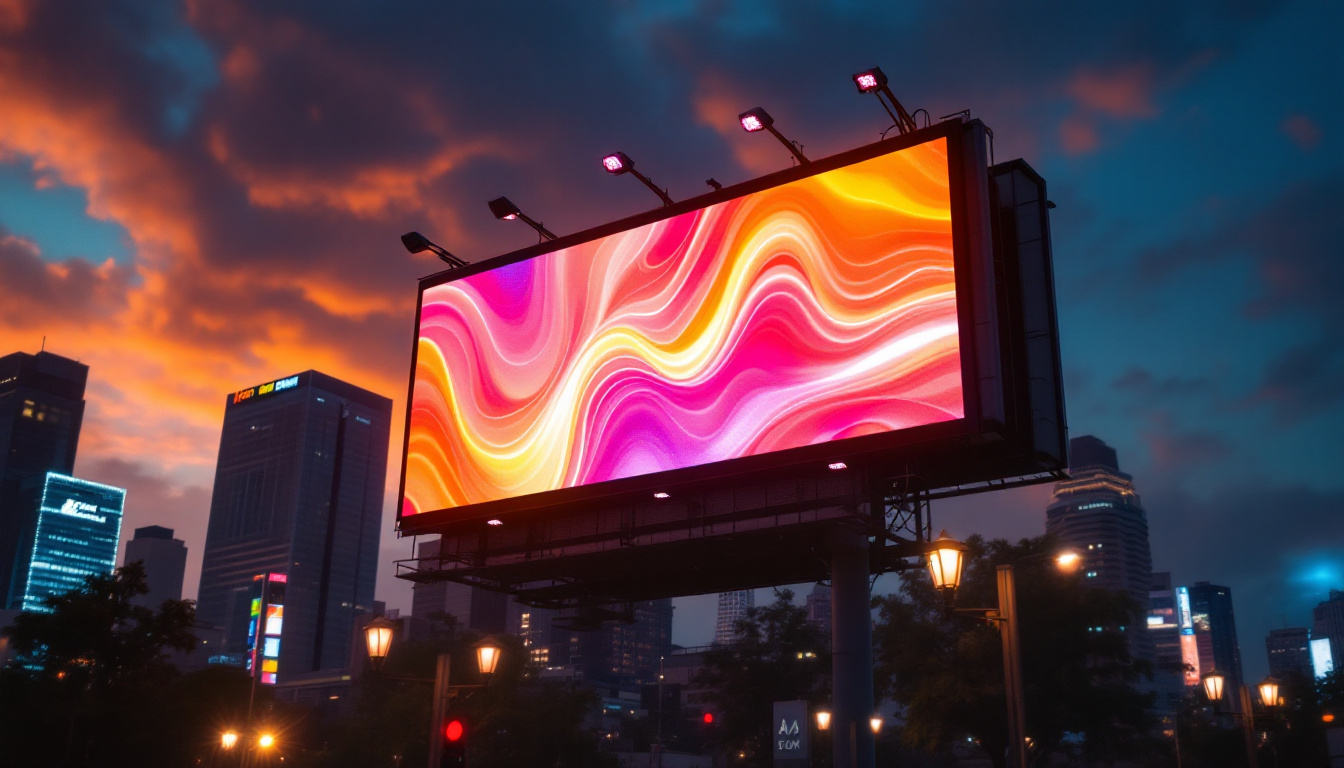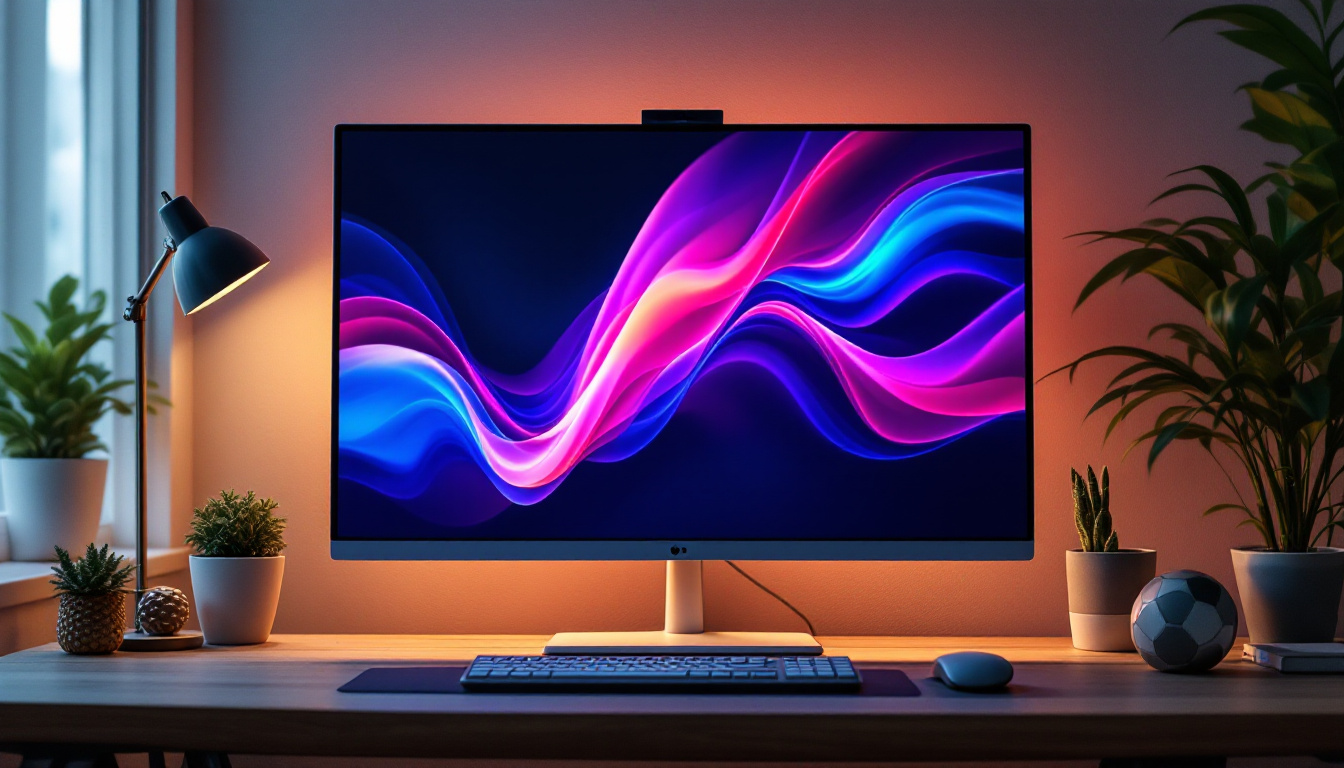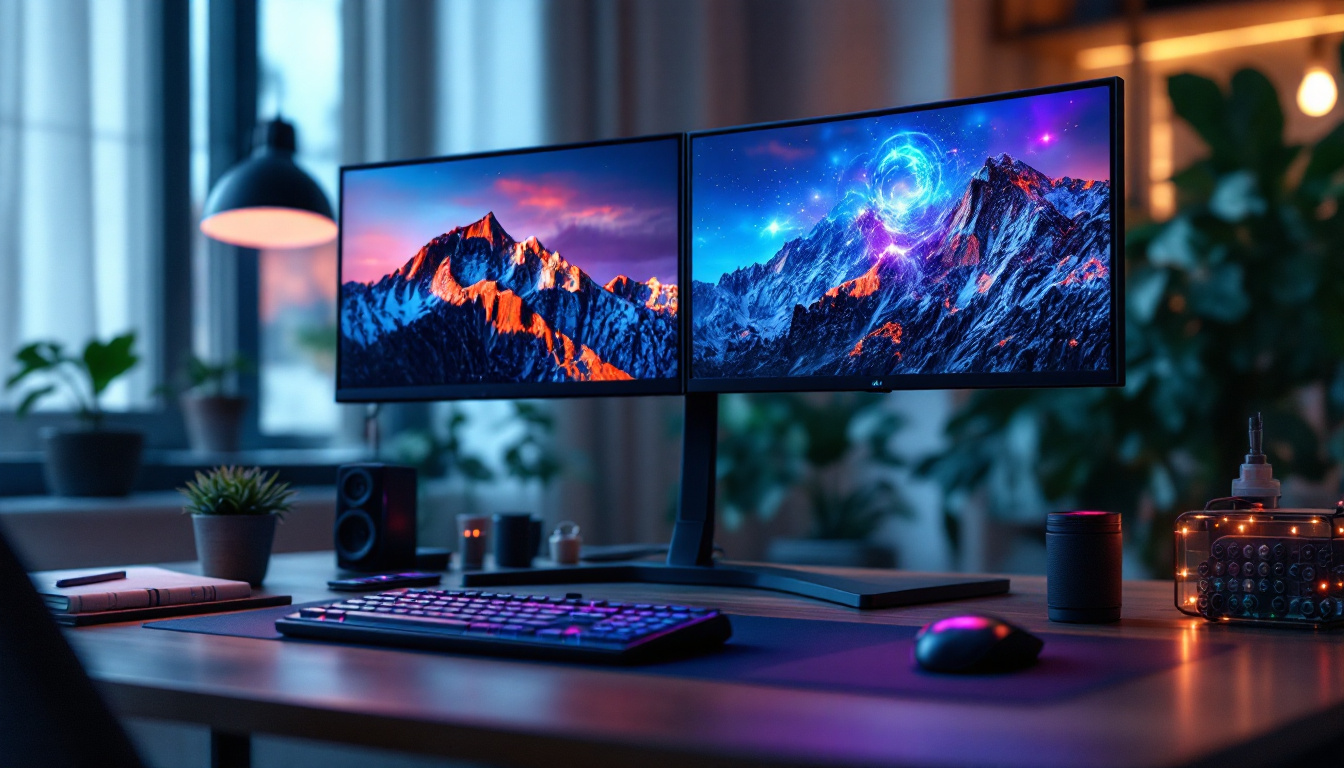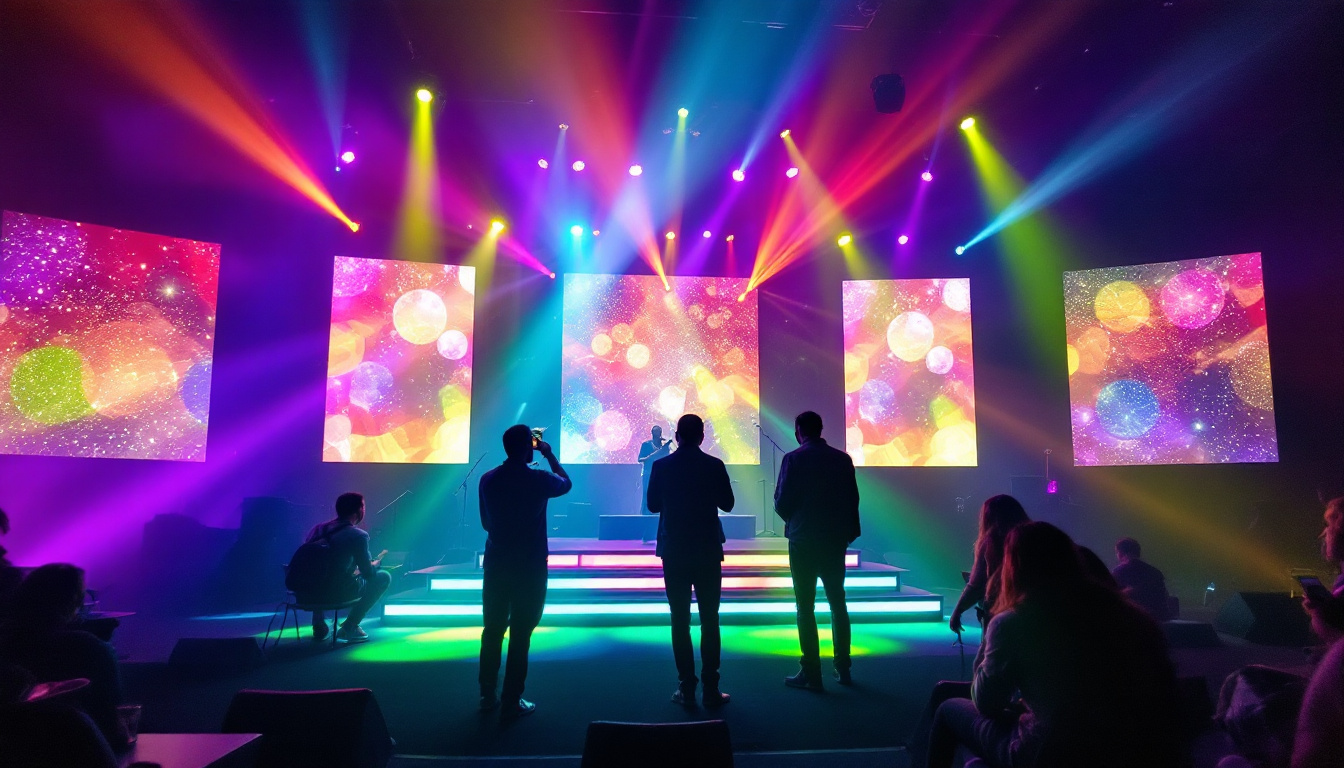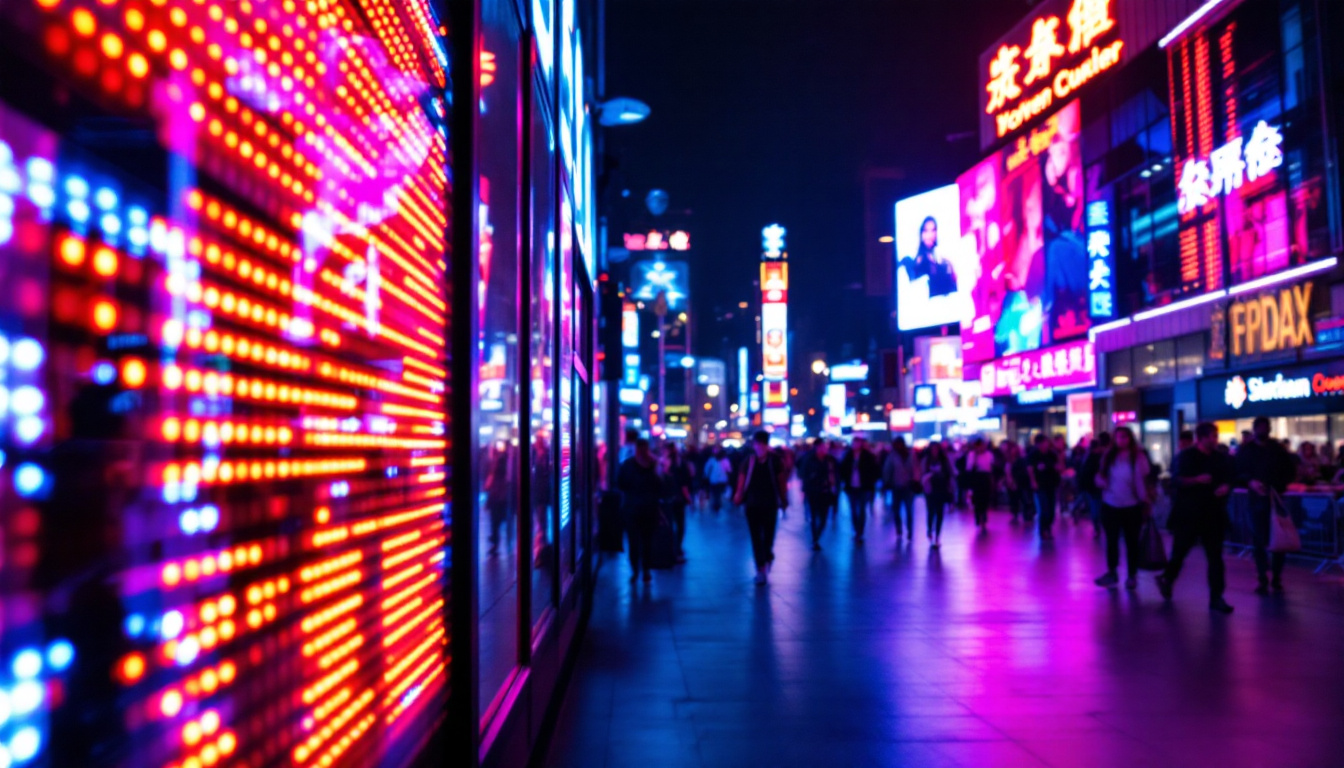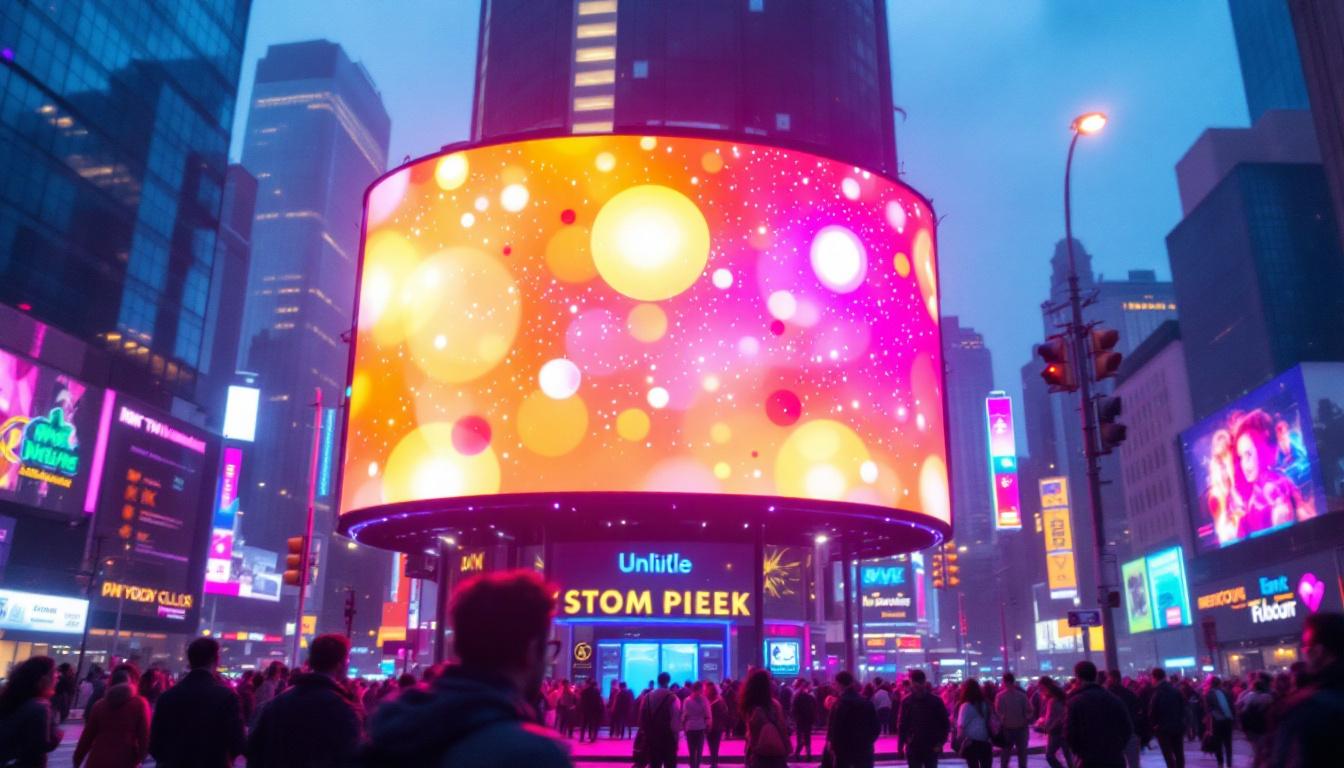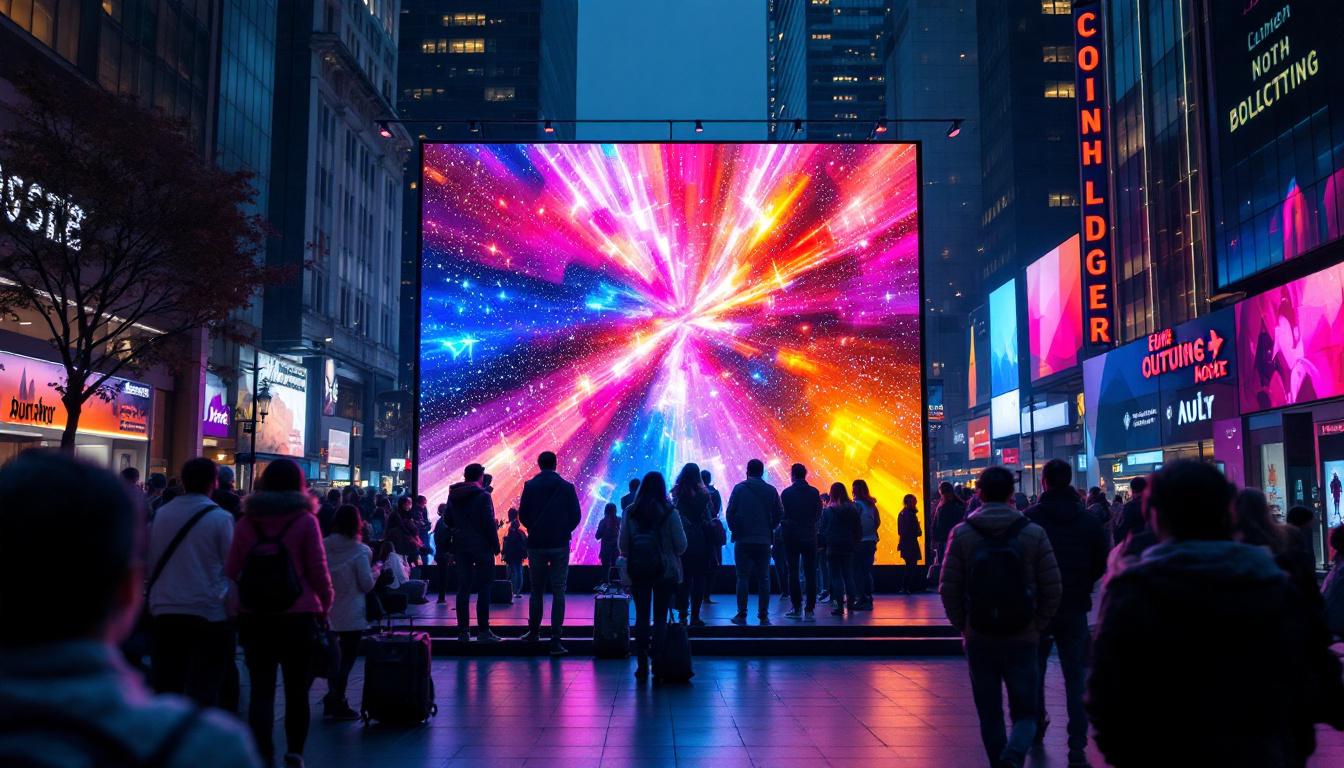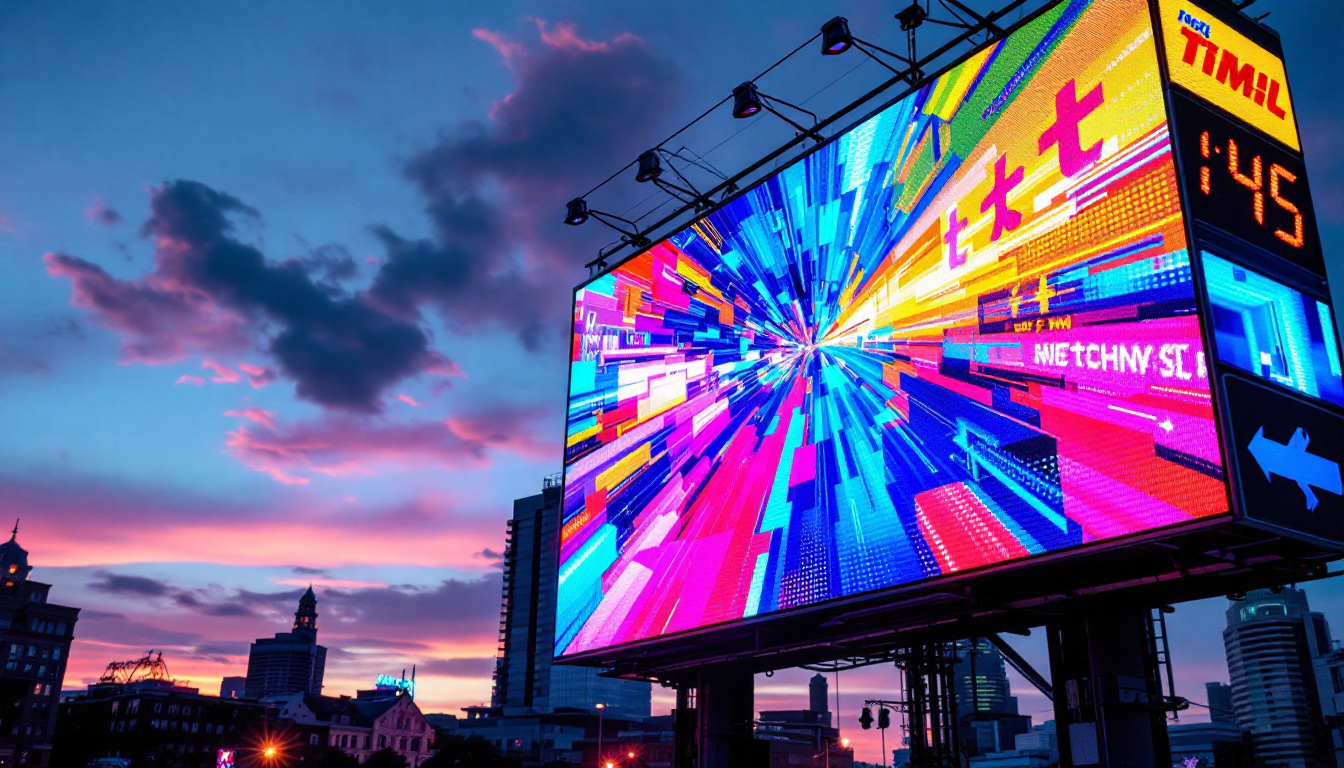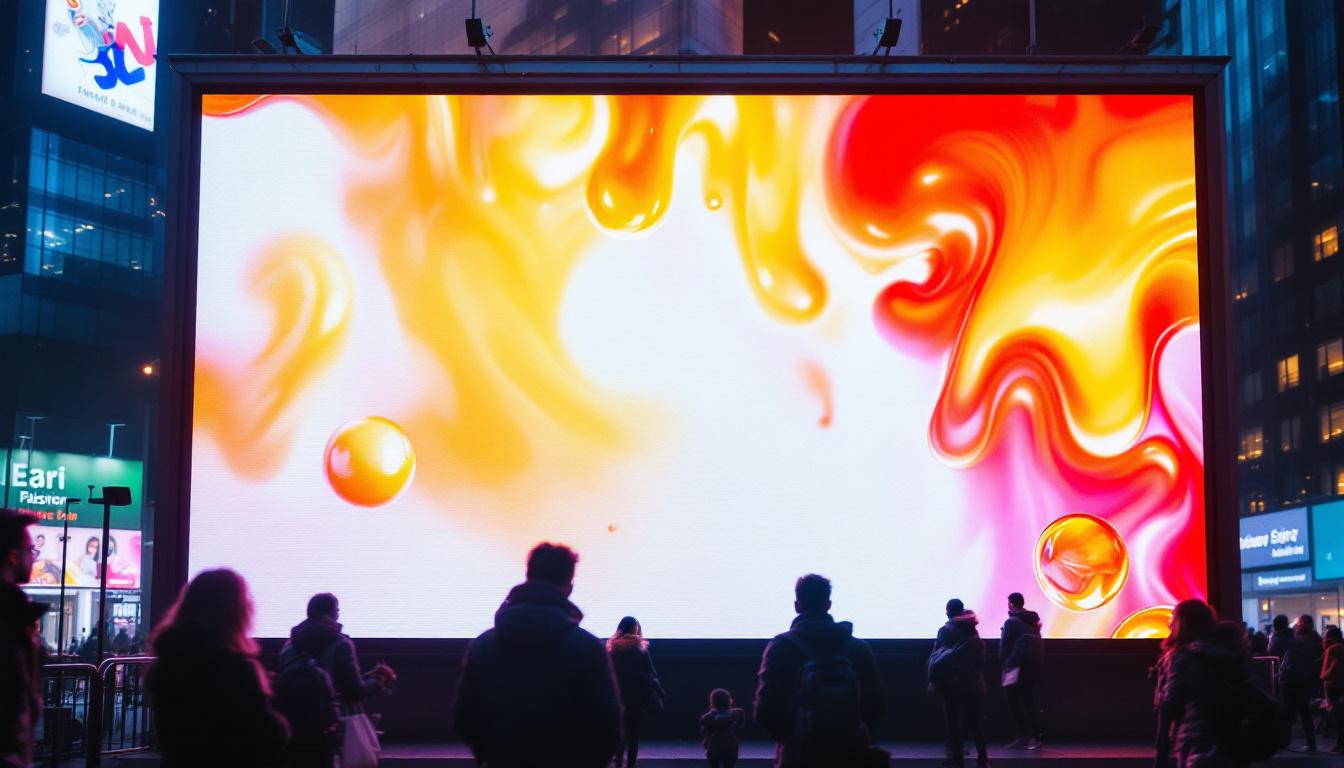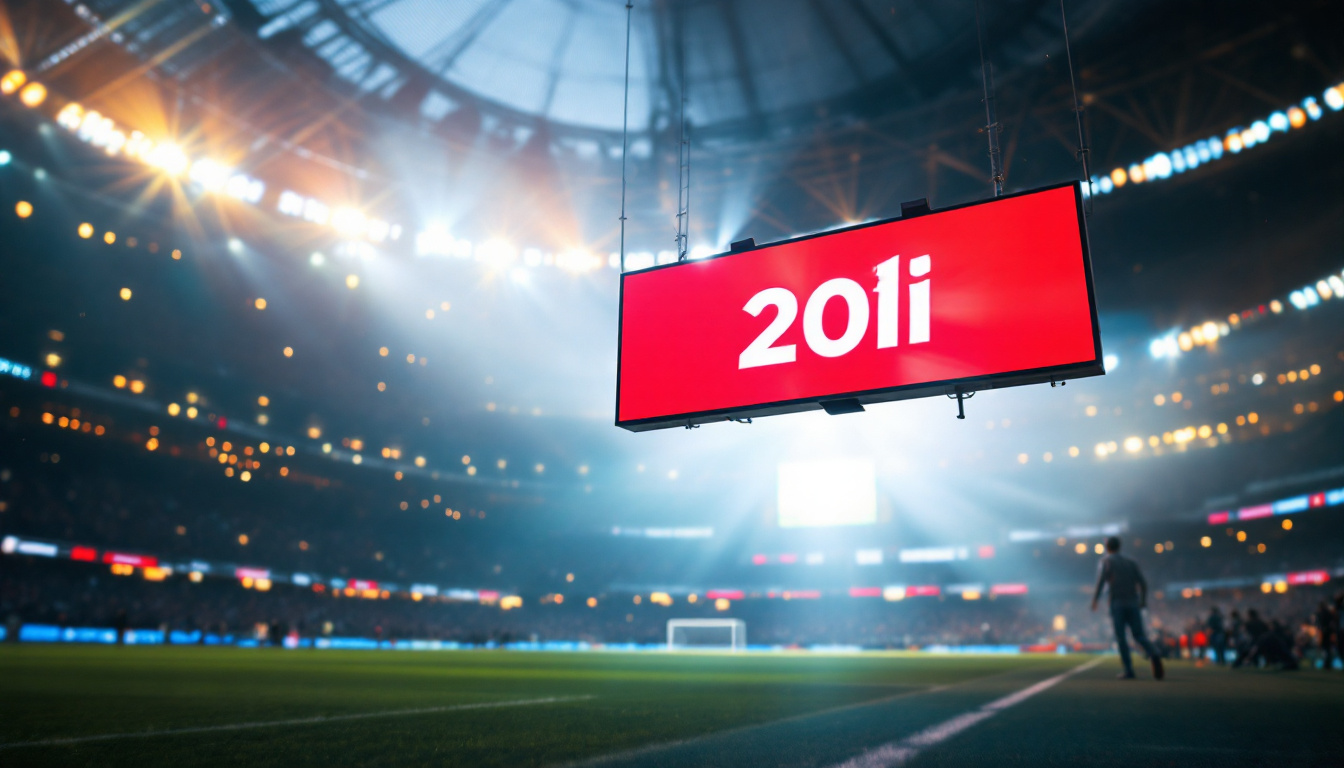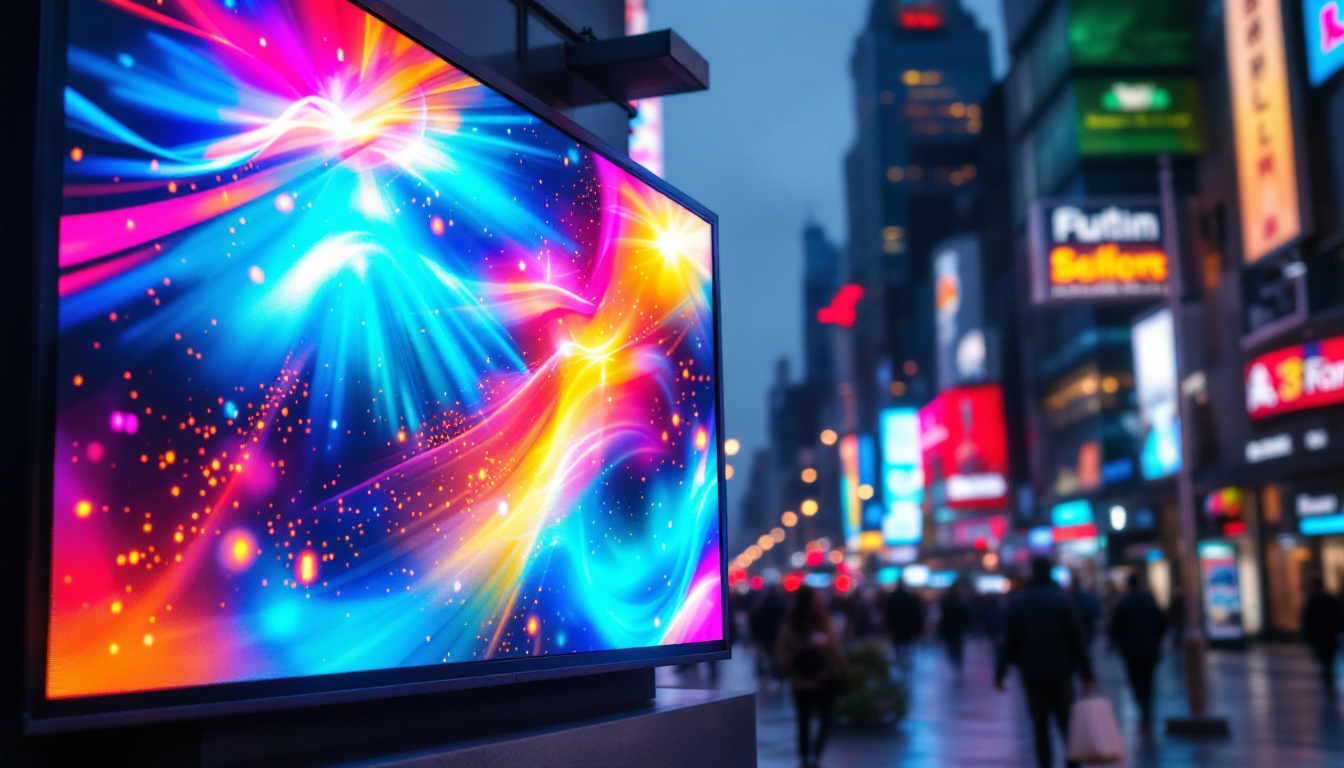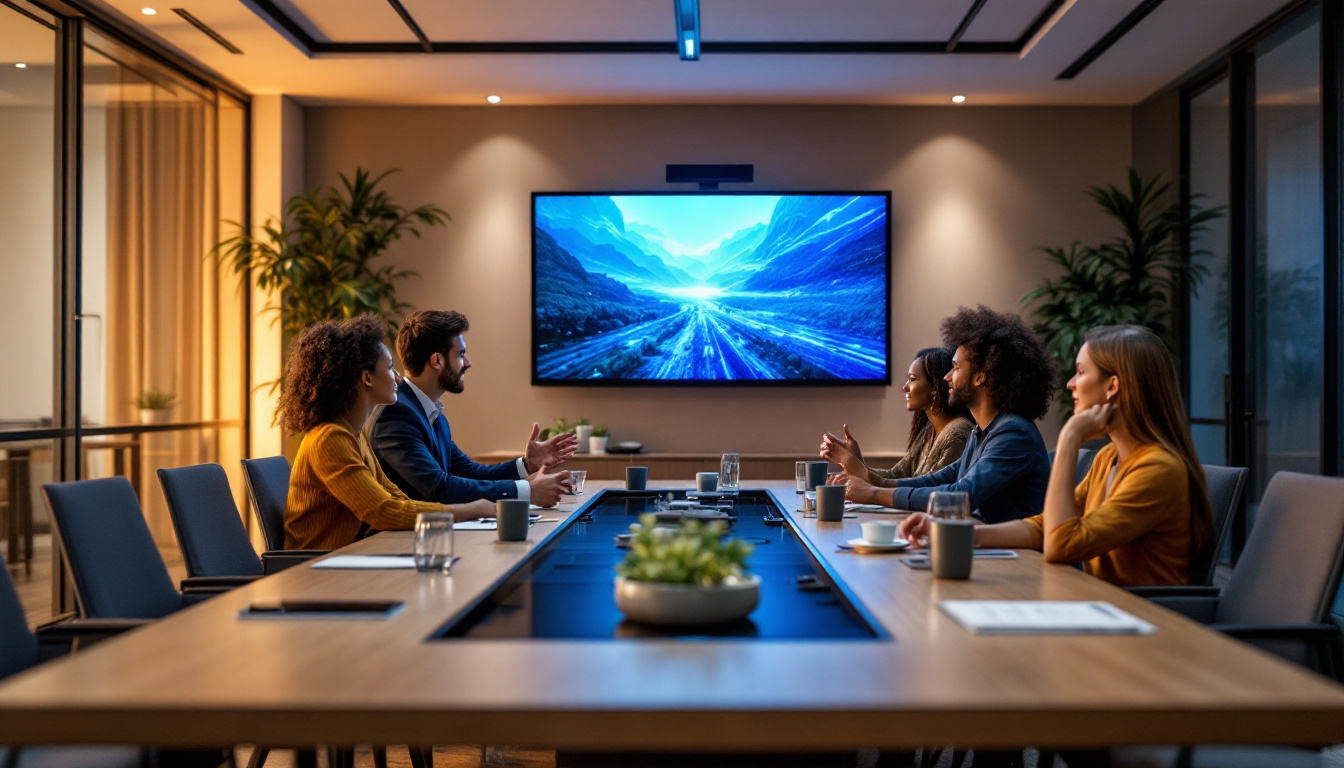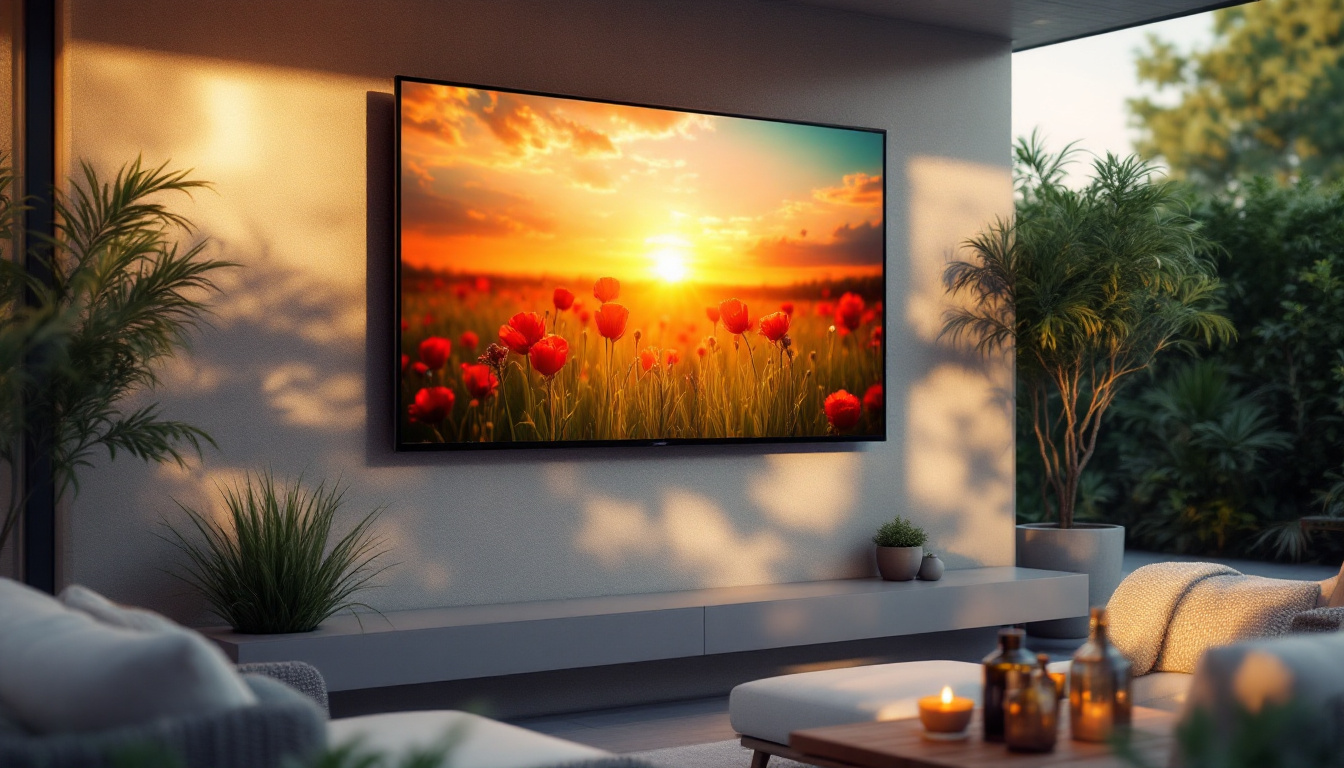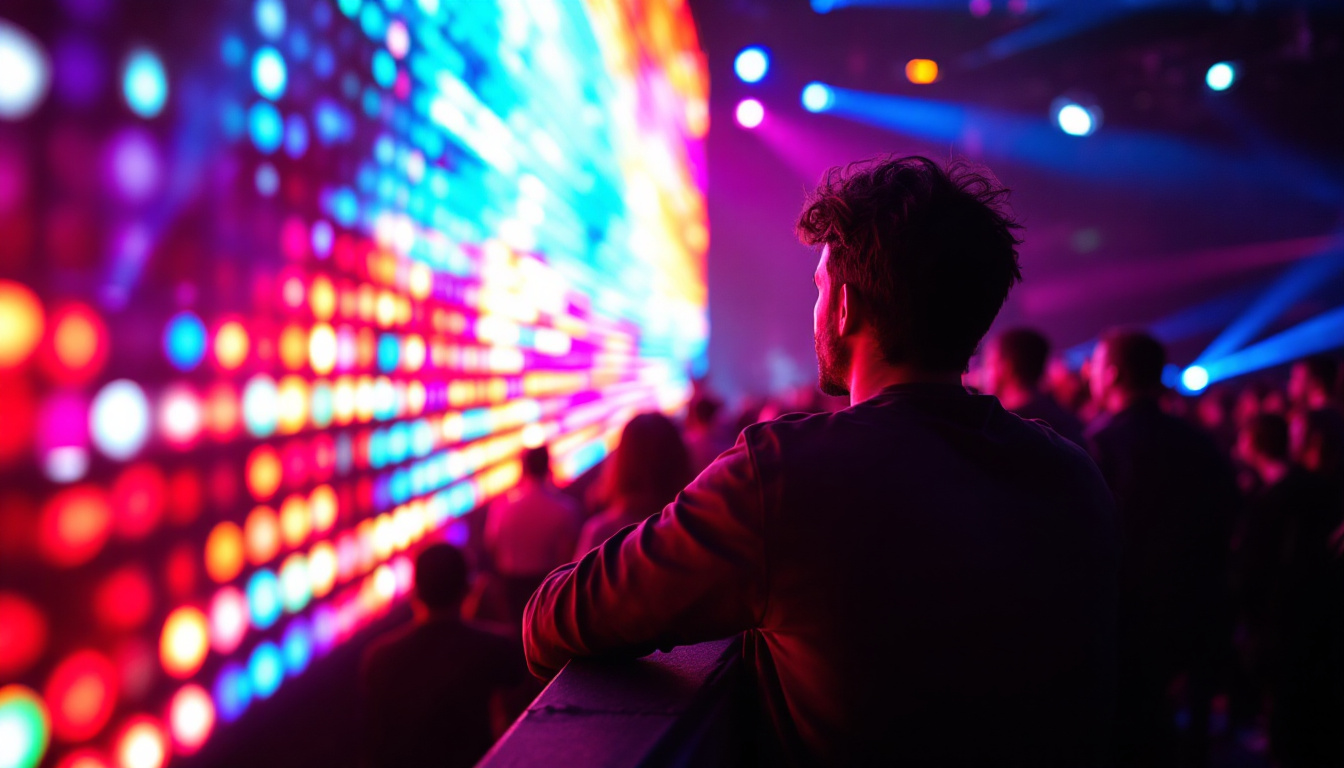In the modern age of technology, LED displays have become a cornerstone of visual communication, transforming the way information is conveyed in various environments. From advertising to live events, these displays are not just tools; they are dynamic canvases that capture attention and engage audiences. This article delves into the intricacies of LED displays, exploring their functionality, applications, and the technology behind them.
Understanding LED Displays
LED displays utilize light-emitting diodes (LEDs) to create vibrant images and videos. Unlike traditional displays that rely on backlighting and liquid crystals, LED technology offers superior brightness, color accuracy, and energy efficiency. This section will explore the fundamental components and working principles of LED displays.
Components of LED Displays
At the core of any LED display are its components, which include the LED modules, control systems, and power supplies. Each of these plays a vital role in the overall performance and functionality of the display.
LED modules are the building blocks of the display, consisting of multiple LEDs arranged in a grid. These modules can be combined to create larger screens, allowing for flexibility in size and shape. The control system manages the input signals, ensuring that the correct images and videos are displayed. Finally, the power supply provides the necessary energy to illuminate the LEDs, making it crucial for the display’s operation. Additionally, the design of the LED modules can vary, with options for different pixel pitches that determine the resolution and clarity of the images. Smaller pixel pitches result in higher resolution, making them suitable for close viewing distances, while larger pitches are ideal for far-off audiences.
Types of LED Displays
LED displays come in various types, each designed for specific applications. The most common types include indoor, outdoor, and transparent LED displays. Indoor displays are typically used in venues such as shopping malls, theaters, and conference rooms, where they provide high-resolution visuals in controlled lighting conditions.
Outdoor displays, on the other hand, are built to withstand harsh weather conditions and are often used for advertising billboards, sports arenas, and public events. These displays are engineered with robust materials and protective coatings to resist rain, wind, and UV exposure, ensuring longevity and consistent performance. Transparent LED displays are a newer innovation, allowing for visibility through the display while still showcasing content, making them ideal for retail environments. This unique feature not only enhances the aesthetic appeal of storefronts but also enables brands to engage customers without obstructing the view of the products behind the screen. Furthermore, advancements in LED technology have led to the development of flexible LED displays, which can be curved or shaped to fit unconventional spaces, opening up new possibilities for creative advertising and artistic installations.
Applications of LED Displays
The versatility of LED displays has led to their widespread adoption across various industries. From entertainment to transportation, these displays serve multiple purposes, enhancing communication and engagement.
Advertising and Marketing
One of the most prominent applications of LED displays is in advertising and marketing. Businesses leverage these displays to showcase their products and services in a visually appealing manner. The bright colors and dynamic content attract potential customers, making LED displays an effective tool for driving sales.
Digital billboards, for instance, can display multiple advertisements in a single location, rotating content at set intervals to maximize exposure. This flexibility allows advertisers to target specific audiences based on time of day or event, optimizing their marketing strategies. Additionally, the ability to incorporate interactive elements, such as QR codes or touchscreens, encourages consumer engagement and can lead to higher conversion rates. As a result, brands are increasingly investing in LED technology to stay competitive in a crowded marketplace.
Events and Entertainment
In the realm of events and entertainment, LED displays have revolutionized the way audiences experience performances. Concerts, sports events, and festivals utilize large LED screens to display live feeds, graphics, and animations, enhancing the overall experience for attendees.
Moreover, the ability to create stunning visual effects through LED technology has made it a staple in stage design. Event organizers can craft immersive environments that captivate audiences, making each event memorable. The use of synchronized lighting and video projections can transform a simple performance into a multi-sensory experience, engaging not just sight but also sound and emotion. This innovative approach has led to the rise of spectacular light shows, where LED displays play a central role in storytelling and artistic expression, leaving lasting impressions on audiences.
Transportation and Public Information
LED displays are also integral to transportation systems, providing real-time information to commuters. Train stations, airports, and bus terminals utilize LED screens to display arrival and departure times, gate information, and emergency alerts. This instant communication helps streamline operations and enhances passenger experience.
Public information displays in cities often use LED technology to convey important messages, such as traffic updates, weather alerts, and public service announcements. The clarity and visibility of LED displays ensure that vital information reaches the public effectively. Furthermore, these displays can be programmed to change content based on real-time data, allowing for timely updates that are crucial during emergencies or significant events. As cities continue to evolve into smart urban environments, the integration of LED displays into public infrastructure will play a pivotal role in improving communication and safety for residents and visitors alike.
The Technology Behind LED Displays
Understanding the technology behind LED displays is essential for appreciating their capabilities. This section will cover the key technological advancements that have contributed to the evolution of LED displays.
Pixel Pitch and Resolution
Pixel pitch refers to the distance between the centers of two adjacent pixels on an LED display. It is a critical factor that determines the display’s resolution and clarity. A smaller pixel pitch results in higher resolution, allowing for more detailed images and videos.
For indoor displays, a pixel pitch of 1.5mm to 3mm is common, providing excellent clarity at close viewing distances. Outdoor displays, however, typically have a larger pixel pitch, ranging from 4mm to 16mm, as they are viewed from greater distances.
Brightness and Color Accuracy
Brightness is another essential aspect of LED displays, measured in nits. Outdoor displays require higher brightness levels, often exceeding 5,000 nits, to remain visible in direct sunlight. Indoor displays, conversely, can operate at lower brightness levels, usually between 1,000 to 3,000 nits.
Color accuracy is equally important, as it affects the overall visual experience. Modern LED displays utilize advanced technology to achieve a wide color gamut, ensuring that colors are vibrant and true to life. This capability is especially crucial in applications such as advertising and entertainment, where visual impact is paramount.
Energy Efficiency and Longevity
Energy efficiency is a significant advantage of LED technology. Compared to traditional displays, LED displays consume less power, making them an environmentally friendly option. This efficiency not only reduces operational costs but also contributes to sustainability efforts.
Moreover, LED displays boast a long lifespan, often exceeding 100,000 hours. This longevity minimizes maintenance and replacement costs, making them a cost-effective investment for businesses and organizations.
Installation and Maintenance of LED Displays
Proper installation and maintenance are crucial for ensuring the longevity and performance of LED displays. This section will outline the key considerations for both installation and ongoing maintenance.
Installation Considerations
When installing an LED display, several factors must be taken into account. The location and environment play a significant role in determining the type of display needed. For outdoor installations, it is essential to choose displays that are weather-resistant and have high brightness levels.
Additionally, the mounting structure must be sturdy enough to support the display’s weight and withstand environmental factors such as wind and rain. Proper electrical wiring and connectivity are also vital to ensure seamless operation.
Maintenance Practices
Regular maintenance is essential for keeping LED displays in optimal condition. This includes routine cleaning to remove dust and debris, which can affect brightness and clarity. Technicians should also inspect connections and components for wear and damage.
In case of malfunction, timely repairs are crucial to minimize downtime. Many LED displays come with diagnostic tools that help identify issues quickly, allowing for efficient troubleshooting and repair.
Future Trends in LED Display Technology
The LED display industry is continually evolving, driven by technological advancements and changing consumer demands. This section will explore some of the future trends that are shaping the landscape of LED displays.
Integration with Smart Technology
As the world becomes increasingly interconnected, the integration of LED displays with smart technology is on the rise. This trend enables displays to connect with the Internet of Things (IoT), allowing for real-time data sharing and interactive content.
For instance, smart LED displays can adjust their brightness based on ambient light conditions, optimizing energy consumption. They can also display personalized content based on viewer demographics, enhancing engagement and effectiveness.
Advancements in Flexible Displays
Flexible LED displays are gaining traction, offering new possibilities for design and application. These displays can be bent and shaped to fit various environments, allowing for creative installations in retail spaces, art exhibitions, and architectural designs.
As technology advances, the production of flexible displays is becoming more cost-effective, paving the way for widespread adoption across different industries.
Enhanced Resolution and Image Quality
With the demand for higher resolution displays on the rise, manufacturers are continually working to improve image quality. Innovations such as microLED technology are emerging, offering even greater pixel density and color accuracy than traditional LED displays.
These advancements will enable the creation of ultra-high-definition displays that provide stunning visuals, further enhancing the viewer experience in various applications.
Conclusion
LED displays have transformed the way information is communicated across multiple sectors, from advertising to entertainment and public information. Their vibrant visuals, energy efficiency, and versatility make them an invaluable asset in today’s technology-driven world. As advancements continue to emerge, the future of LED displays promises to be even more exciting, with innovations that will further enhance their capabilities and applications.
Understanding the intricacies of LED displays, including their components, applications, and technological advancements, is essential for leveraging their potential effectively. Whether for business, entertainment, or public service, LED displays are set to remain at the forefront of visual communication for years to come.
Discover LumenMatrix’s Innovative LED Solutions
Ready to elevate your visual communication with cutting-edge LED technology? Look no further than LumenMatrix, a pioneer in crafting LED display modules that bring your brand to life. From captivating Indoor and Outdoor LED Wall Displays to dynamic Vehicle and Sports LED Displays, our solutions are designed to captivate and engage. Experience the future of digital signage with our Custom, All-in-One, and Transparent LED Displays. Embrace the power of LumenMatrix and transform your space into a mesmerizing visual experience. Check out LumenMatrix LED Display Solutions today and let your message shine with unparalleled clarity and impact.

